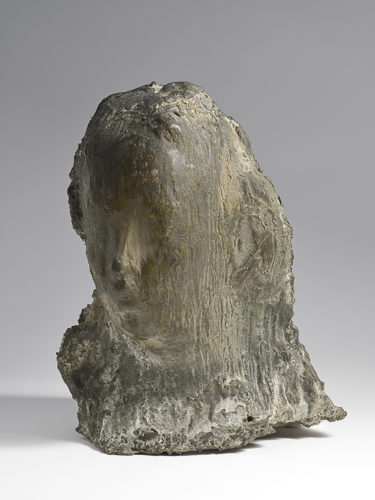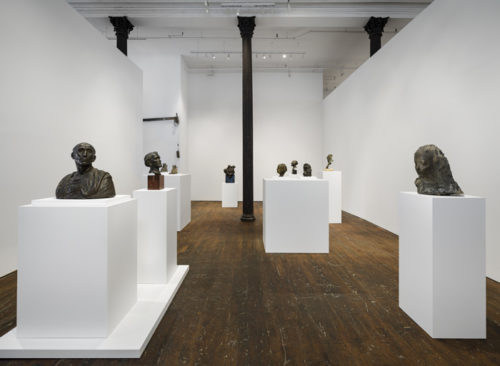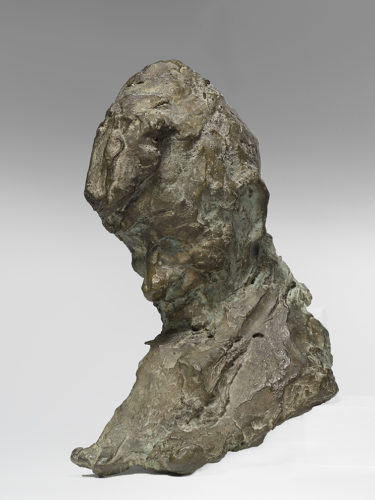MEDARDO ROSSO. TEN BRONZES
Peter Freeman, Inc., New York/ Paris and Amedeo Porro Fine Arts, Lugano/London are pleased to present an ambitious exhibition of work by Italian modernist sculptor Medardo Rosso. This is the first exhibition anywhere to focus exclusively on Rosso’s bronzes, ten of which will be on display at Peter Freeman, Inc., New York.
If Rosso is best known for his works in wax, then far too obscure are his great cast bronzes. Bronze was as important a material for Rosso as plaster and wax, and the bronze casts can at times display even more invention and manipulation of surface and material than any of the waxes. Rosso mostly cast his own bronzes, a practice completely at odds with the dominant taste of the time for professionally-produced bronzes with a comfortable finish of surface and patina. Rosso’s bronzes were often caked with plaster investment, unchased spurious metal flows, and iron nails. No two casts were the same, indeed no two casts were meant to be the same. These were not works made in editions, nor were they made for the bourgeois market; they were made by a visionary for the connoisseur collector, of which Rosso thought there were far too few.
The ten works included in this show span Rosso’s entire career. Between 1882 and 1906, Rosso produced around 35 sculptural subjects; Sagrestano and La Ruffiana are among the first, both from his early Milan period, and Ecce Puer was his last subject—all three of these works are represented in this exhibition. We are thrilled to show two significant casts of the same subject, Malato all’ospedale (1889). Compared side-by-side, one can see variations in special choices—differences in treatments of the overall form and in how the work is canted in space, comparisons that reveal much of Rosso’s working method and so what is at the heart of this exhibition.
There are also two quite rare subjects which belong to the least known part of Rosso’s work, his copies from antique and renaissance sculpture, San Francesco and Niccolò da Uzzano, these both quite faithful renderings after Donatello.
Rosso has been a point of reference, a sort of lighthouse, to many artists of the twentieth and twenty-first centuries, from Umberto Boccioni to Willem de Kooning, from Lucio Fontana to Thomas Schütte—even Jean Dubuffet, Louise Bourgeois, and Juan Muñoz drew inspiration from his work; such a list can go on. We have published a catalogue—including an important historic text, written in Dutch by Etha Fles in 1919 and translated here for the first time. It is our hope that this exhibition and catalogue will contribute to a greater understanding of the radical work of an artist who, at the turn of the century, was a genius in sculpture but who also pushed the creative and experimental boundaries of drawing and photography at a time when the rules of art were only beginning to break.
















